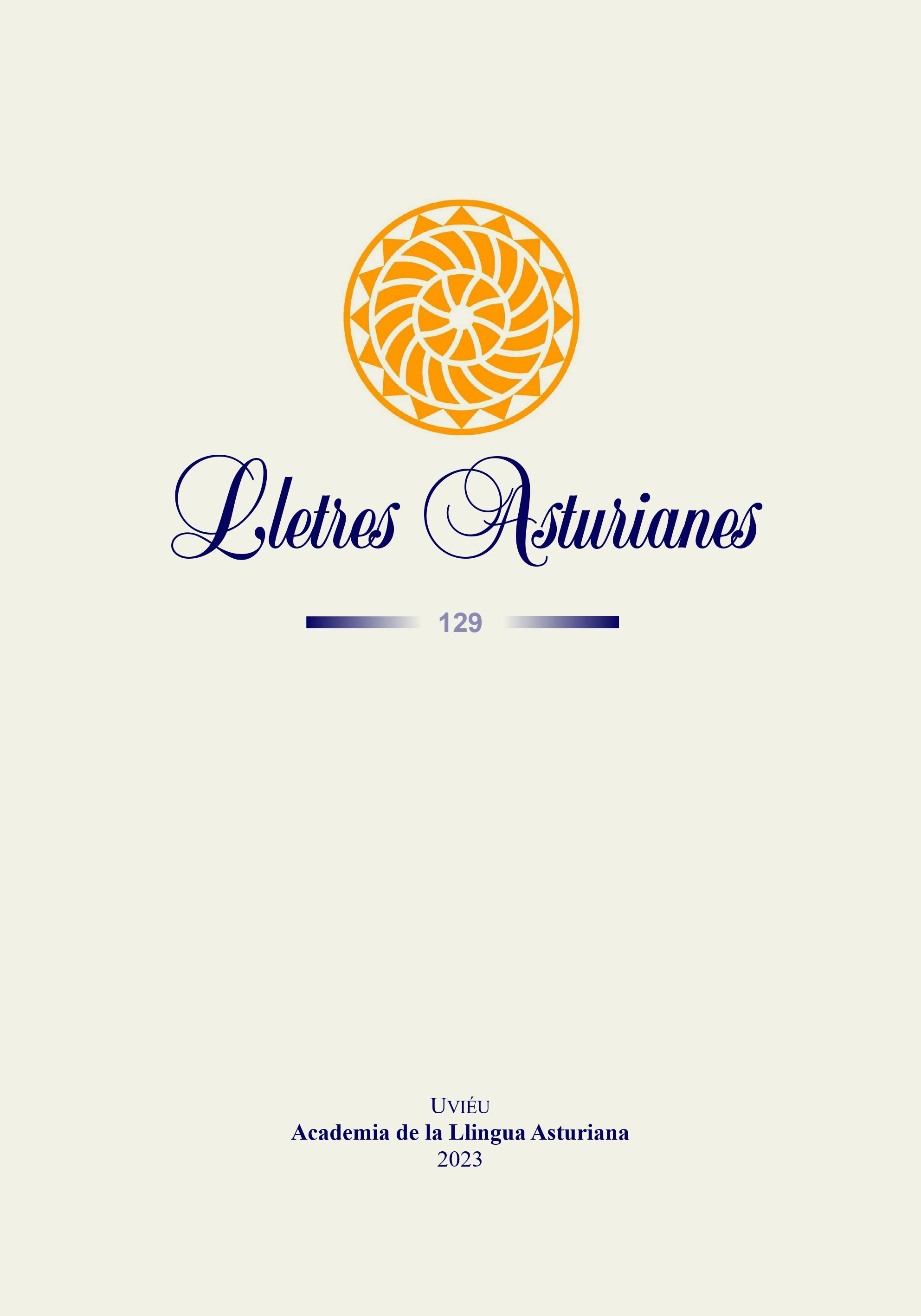Abstract
The voicing of voiceless consonants /p t k/ in intervocalic position in some peninsular Romance languages is well known, and the same behaviour has been observed in current Asturian. To assess its scope, the aim of this article is to present the results of the spectrographic analysis of several samples in which linguistic variables such as consonant type, context, accent, and sentence modality have been controlled. In addition, sociolinguistic variables such as the geographical origin of the informants, gender and language style have been considered. For this purpose, a corpus of elicited speech and a corpus of spontaneous speech were used. Each of the realisations of the consonants /p t k/ in intervocalic contexts was analysed with the Praat. The presence of glottal pulses in the signal oscillograms was assessed to delimit the voicing of the consonants. The results corroborated the initial hypothesis: in Asturian an increase in lenition was observed, particularly in spontaneous speech. Finally, the phonological impact of this voicing was assessed.
References
Alarcos Llorach, E. (1974). Fonología española. Madrid: Gredos [1er ed. 1950].
Alvarellos Pedrero, M., Muñiz Cachón, C., Díaz Gómez, L. & González Rodríguez, R. (2011). La entonación en las variedades lingüísticas de Asturias: estudio contrastivo. Revista Internacional de Lingüística Iberoamericana, 17, 111-120.
Boersma, P. & Weenink, D. (2023). Praat: Doing phonetics by computer (Versión 6.3.10) [Programa informático]. University of Amsterdam. http://www.praat.org
García Arias, X. Ll. (2003). Gramática histórica de la lengua asturiana. Uviéu: Academia de la Llingua Asturiana.
Hualde, J. (2015). Lenición de obstruyentes sordas intervocálicas en español: estado de la cuestión. En Y. Congosto Martín, M. L. Montero Curiel & A. Salvador Plans (Eds.). Fonética Experimental, Educación Superior e Investigación. I. Fonética y Fonología (pp. 113-136). Madrid: Arco/Libros.
Hualde, J. I., Simonet, M. & Nadeu, M. (2011). Consonant lenition and phonological categorization. Laboratory Phonology, 2.2, 301-330.
Machuca Ayuso, M. J. (1997). Las obstruyentes no continuas del español: relación entre categorías fonéticas y fonológicas en el habla espontánea. [Tesis doctoral inédita, Universitat Autònoma de Barcelona].
Martínez Celdrán, E. (1989). Fonética. Barcelona: Teide. [1ª ed. 1984].
Martínez Celdrán, E. (2004). Problems in the classification of approximants. Journal of the International Phonetic Association 34/2.
Martínez Celdrán, E. (2009). Sonorización de las oclusivas sordas en una hablante murciana: Problemas que plantea. Estudios de Fonética Experimental, 18, 253-271.
Martínez Celdrán, E. & Regueira, X. L. (2008). Spirant approximants in Galician. Journal of the International Phonetic Association, 38, 51-68.
Muñiz Cachón, C. (2002). Realización del fonema /g/ en Asturias. Revista de Filoloxía Asturiana, 2, 53-70.
Muñiz Cachón, C. & M. Cuevas Alonso (2003-04). Grados de sonorización de /s/ en el español de Asturias. Revista de Filoloxía Asturiana, 3/4, 291-304.
Navarro Tomás, T. (1999). Manual de pro¬nunciación española. Madrid: Consejo Superior de Investigaciones Científicas. [1ª ed. 1918].
Neira, J. (1976). El bable. Estructura e historia. Salinas: Ayalga ediciones.
Quilis, A. (1993) Tratado de fonología y fonética españolas. Madrid: Gredos.


